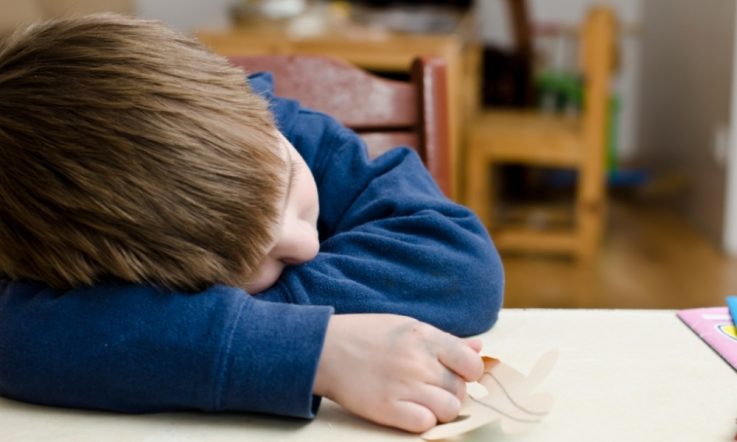Suicide is a significant public health issue to its serious social, emotional and economic consequences. A recent report on global suicide prevention published by the World Health Organisation (2014) indicates that, on average, 11.4 completed suicides occur for every 100 000 individuals worldwide.
Youth suicide is particularly worrisome, representing the leading cause of death in young adults in Australia (ABS, 2011). There is increasing recognition that a coordinated approach to suicide prevention must involve the participation of key community organisations. Amongst them, schools are particularly well placed to deliver interventions that will enhance resilience, improve mental health and reduce risk of suicide (Suicide Prevention Australia, 2010).
Reviews of school-based suicide interventions (Robinson et al, 2013; Gould et al, 2003; Katz et al, 2013) have identified six broad approaches to addressing suicidal behaviours in young people. These are:
- Suicide awareness curricula;
- Screening;
- Postvention;
- Skills training;
- Gatekeeper training and;
- Peer helper programs.
The most promising approaches centre around training programs which target different groups within the school community.
Skills training programs for students are designed to reduce suicide risk by instilling and improving protective skills, such as coping, problem solving, cognitive skills and decision making. These programs can be delivered to all students or a targeted group, for example, those identified as high risk, and have shown promising effects on suicide knowledge, attitudes and behaviour.
Gatekeeper training programs are designed to improve the identification of suicidal youth, by training school staff or parents to recognise the warning signs of suicide and to refer students on to further care. Gatekeeper training can be delivered universally (such as to all school staff) or selectively (such as to groups like parents of at-risk students) and has been found to be effective at improving suicide knowledge, attitudes and confidence.
Similarly, peer helper programs train students in a gatekeeper role, equipping them with knowledge and skills to identify and respond appropriately to fellow at-risk peers. These peer helper programs are based on the premise that youths are more likely to confide in a peer than an adult, and provide another strategy to help build a cohesive, supportive network within the school environment.
Strategies for educators
A promising suicide prevention program was identified in a recent review of school-based programs (Katz et al., 2013). The Sources of Strength (SOS) peer leadership program takes a social connectedness approach to improving help-seeking for suicide and general psychological distress. It is designed to develop protective, supportive influences across an entire school population by focusing on enhancing help-seeking behaviours, youth-adult communication, and coping skills to promote help-seeking (LoMurray, 2005; Wyman et al., 2010). The SOS program is not currently available in Australia; however, research is underway to investigate its effectiveness in Australian schools.
In the interim, there are a range of strategies that educators can utilise to promote wellbeing and minimise risk in school communities. In particular, interventions targeting risk factors for suicide (such as depression) can have a significant impact on a young person’s mental health, without directly addressing suicide. Indeed, there are a number of mental health promotion and mental illness prevention programs that have been found to be effective in Australian school communities, some of which can be incorporated into the school curriculum.
HeadStrong is an educational curriculum resource designed to facilitate the delivery of mental health material to Stage 5 students in Personal Development Health and Physical Education (PDHPE) classes. The HeadStrong resource includes information on mood disorders for teachers, activities to implement in their classrooms, and a series of visually appealing slides which can be freely downloaded from the HeadStrong website.
All HeadStrong content is linked to state and national syllabus outcomes, which allows teachers to meet required mental health objectives. The resource was recently evaluated in a large randomised controlled trial and was shown to improve students’ knowledge and understanding of mental health issues (especially depression) and to reduce stigma, relative to a control group (Perry et al., 2014). These findings are significant as, according to Gulliver, Griffiths and Christensen (2010), poor mental health literacy and stigmatising attitudes are considered to be the two key obstacles to help-seeking in young people.
MoodGYM has also shown effectiveness. MoodGYM is an online intervention program based on principles of Cognitive Behavioural Therapy that is fully automated and self-directed. It provides adolescents with skills to change unhelpful thoughts and beliefs, improve self-esteem and enhance interpersonal relationships.
Although MoodGYM is traditionally introduced and delivered in classrooms, it is available for free outside of the classroom and, therefore, can be accessed by students in their own time if they wish. According to Calear, Christensen, Mackinnon, Griffiths & O’Kearney (2009), the program has demonstrated reductions in symptoms of depression (in boys) and anxiety (for both boys and girls).
Additional online mental health programs for use in school settings are currently being developed and tested. For example, SPARX is a web-based gaming intervention to prevent and treat depression. It has been used in alternative education settings in New Zealand, and has seen positive results (Fleming, Dixon, Frampton & Merry, 2012). A large randomised controlled trial in Australian schools will be launched in 2015.
Additional resources are also available to young people outside of the school curriculum. BiteBack is an online positive psychology website for adolescents that uses a combination of interactive exercises and information to address domains such as gratitude, meaning, optimism, and hope. Adolescents who participated in a recent trial examining the effectiveness of this website demonstrated improved wellbeing and decreased symptoms of depression and stress, relative to a control group (Manicavasagar, Horswood, Burckhardt, Lum, Hadzi-Pavlovic & Parker, 2014). Importantly, the majority of participants also stated that the website was fun, interesting and easy to use.
Another non-curriculum based program available to young Australians is the National Institute for Mental Health Research (NIMHR) Youth Ambassadors Program. Ambassadors are provided with training, which is then used to increase awareness about mental illness and the importance of help-seeking amongst peers. Ambassadors are also the driving force behind stigma reduction initiatives, in service of a positive school culture around mental health.
In summary, although there is still much work to be done in the field of school-based suicide prevention, there is evidence to support a number of promising strategies to prevent suicide within the school environment. To date, very little specific attention has been paid to introducing these programs in Australian schools. Accordingly, we make the following specific recommendations:
- Implementation of the Sources of Strength (SOS) program in Australian schools should be considered in order to facilitate peer support networks;
- Gatekeeper training programs for teachers should be introduced to equip teachers with the necessary skills and confidence required to identify and refer at-risk students;
- Resources and programs that promote mental health and wellbeing in school communities (such as HeadStrong, Youth Ambassadors and BiteBack) should be promoted within and outside of the curriculum;
- Evidence-based prevention programs such as MoodGYM should be delivered within schools to reduce the risk of depression and associated mental health concerns;
Finally, we recommend that a tailored, evidence-based suicide prevention policy be implemented in every school. This policy should outline the execution of promotion and prevention programs, goals for a positive mental health climate and guidelines for managing suicidal ideation and behaviour within the school environment. It should be disseminated to all staff, and provided in conjunction with training.
Says King (2001) in Developing a comprehensive school suicide prevention program, not only do suicide prevention policies tend to increase the number of programs in schools that are designed to combat suicide, they also represent an official declaration of suicide prevention as a priority.
References
Australian Bureau of Statistics. (2011). Causes of Death, 2011. Cat. No. 3303.0. Canberra, Australia: ABS, 2013.
Calear, A.L., Christensen, H., Mackinnon, A., Griffiths, K.M. and O’Kearney, R. (2009). The YouthMood Project: a cluster randomized controlled trial of an online cognitive behavioral program with adolescents. Journal of Consulting and Clinical Psychology 77(6).
Fleming, T., Dixon, R., Frampton, C., and Merry, S. (2012). A pragmatic randomized controlled trial of computerized CBT (SPARX) for symptoms of depression among adolescents excluded from mainstream education. Behavioural and Cognitive Psychotherapy 40(05).
Gould, M.S., Greenberg, T., Velting, D.M., and Shaffer, D. (2003). Youth suicide risk and preventive interventions: A review of the past 10 years. Journal of the American Academy of Child and Adolescent Psychiatry 42.
Gulliver, A., Griffiths, K. M., & Christensen, H. (2010). Perceived barriers and facilitators to mental health help-seeking in young people: a systematic review. BMC Psychiatry, 10(1), 113.
Katz, C., Bolton, S-L., Katz, L.Y., Isaak, C., Tilston-Jones, T., Sareen, J., et al. (2013). A systematic review of school-based suicide prevention programs. Depression and Anxiety 30.
King, K.A. (2001). Developing a comprehensive school suicide prevention program. Journal of School Health 71(4).
LoMurray, M. (2005). Sources of Strength Facilitator's Guide. Bismarck, ND: The North Dakota Suicide Prevention Project.
Manicavasagar, V., Horswood, D., Burckhardt, R., Lum, A., Hadzi-Pavlovic, D., and Parker, G. (2014). Feasibility and effectiveness of a web-based positive psychology program for youth mental health: Randomized controlled trial. Journal of Medical Internet Research 16(6).
Robinson, J., Cox, G., Malone, A., Williamson, M., Baldwin, G., Fletcher, K., et al. (2013). A systematic review of school-based interventions aimed at preventing, treating and responding to suicide-related behavior in young people. Crisis 34.
Suicide Prevention Australia (2010). Position Statement: Youth Suicide Prevention. Suicide Prevention Australia. [Accessed 30 September 2014]. Retrieved from: http://suicidepreventionaust.org/wp-content/uploads/2012/01/SPA-Youth-Suicide-Prevention-Position-Statement.pdf
World Health Organisation (2014). Preventing suicide: a global imperative. ISBN: 978 92 4 156477 9. [Accessed 30 September 2014]. Retrieved from: http://www.who.int/mental_health/suicide-prevention/world_report_2014/en/
Wyman, P.A., Brown, H., Lo Murray, M., Schmeelk-Cone, K., Petrova, M., Yu, Q., et al. (2010). An outcome evaluation of the Sources of Strength suicide prevention program delivered by adolescent peer leaders in high schools. American Journal of Public Health 100.
Is there a specific program in place at your school designed to address the prevention of youth suicide?



